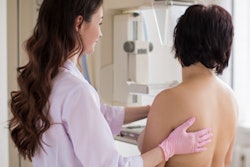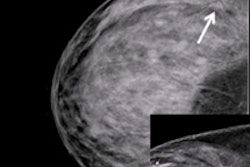
Media coverage of mammography tends to emphasize controversy and conflict, which may negatively influence women's decision-making when it comes to screening, according to a study published online November 5 in Women's Health Issues.
Despite an overall push toward informed decision-making regarding screening mammography for women in their 40s, conflicting recommendations across organizations can cause confusion, wrote a team of researchers led by Rebekah Nagler, PhD, from the University of Minnesota. The study highlights the need for better strategies to help women discern the pros and cons of screening for themselves.
"For clinical guidelines to realize their potential at shaping the services patients actually receive, practitioners and policymakers need a better understanding of the numerous ways in which these recommendations get disseminated," the group wrote.
Evolution?
Nagler's team sought to investigate whether media coverage of mammography screening has evolved over the years. The investigators analyzed televised news from four media events between 2009 and 2016, all of which focused on screening recommendations released by the U.S. Preventive Services Task Force (USPSTF) and the American Cancer Society (ACS). The study included 364 televised news stories.
The four events included the following:
- November 2009 USPSTF recommendation (113 stories)
- April 2015 draft of USPSTF recommendation (87 stories)
- October 2015 ACS recommendation (89 stories)
- January 2016 USPSTF final recommendation (75 stories)
The number of news stories with on-screen words that emphasized conflict or controversy decreased across the four events; however, overall, the news stories continued to emphasize conflict, the researchers found. Regarding the risks and benefits of screening mammography, there was a general trend toward emphasizing risks. Finally, accuracy regarding the USPSTF's recommendations improved over time, while coverage of the 2015 ACS recommendation was fairly accurate.
| Televised news stories regarding screening mammography recommendations | ||||
| November 2009 USPSTF | April 2015 USPSTF draft | October 2015 ACS | January 2016 USPSTF final | |
| On-screen words describe issue as conflicting or controversial | 35.4% | 8% | -- | 0% |
| Tone of news story emphasizes conflict | 96.5% | 59.8% | 50.6% | 54.7% |
| Arguments supporting recommendation changes | ||||
| Risk of screening may outweigh benefits | 25.7% | 1.1% | 30.3% | 36% |
| Arguments opposing recommendation changes | ||||
| Early detection is best strategy for cancer prevention/control | 32.7% | 4.6% | 36% | 14.7% |
| Accuracy of news stories regarding USPSTF | ||||
| USPSTF is a government panel (false) | 44.3% | 47.1% | -- | 37.3% |
| Women ages 40-49 should not get screened (false) | 46.9% | 3.4% | -- | -- |
| Women ages 40-49 should not get routine screening (true) | 64.6% | 95.4% | -- | 89.3% |
| Women ages 50-74 should get screened every 2 years (true) | 58.4% | 83.9% | -- | 94.7% |
| Accuracy of news stories regarding ACS | ||||
| Routine screening should start at 45 (true) | -- | -- | 94.4% | -- |
| Women 55 and older should get screened every 2 years (true) | -- | -- | 70.8% | -- |
Although the study shows that news coverage of screening mammography persistently emphasizes conflict and controversy, how this coverage actually affects women -- e.g., adding to confusion or influencing them to skip screening -- remains unclear, according to Nagler and colleagues. More research is needed, along with better strategies for getting accurate information to women.
"It may be important to work with practitioners to better equip all women ... to negotiate conflicting mammography recommendations and weigh the benefits and risks of screening," the group concluded. "It may also be worthwhile to work with journalists to improve communication about these complex issues, because health professionals are important sources from which local journalists draw."



















